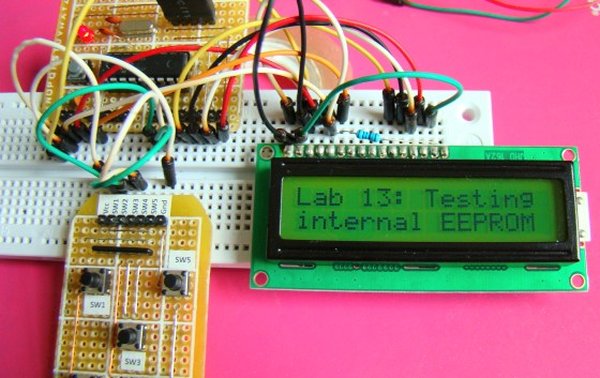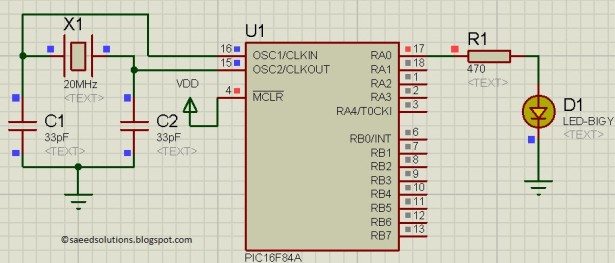Summary of PIC16F84A internal EEPROM code and Proteus simulation
This article provides C language code for reading and writing to the internal 64-byte EEPROM of the PIC16F84A microcontroller, using MPLAB with the HI-TECH C compiler. The tutorial assumes basic PIC16F84A knowledge and demonstrates successful EEPROM programming through an LED indicator on pin RA0 in a Proteus simulation. The compiled code and simulation files are available for download.
Parts used in the PIC16F84A EEPROM Read/Write Project:
- PIC16F84A microcontroller
- LED
- Proteus simulation software
- MPLAB IDE
- HI-TECH C compiler
This post provides the internal EEPROM reading and writing code for PIC16F84A microcontroller. As we know[1], PIC16F84A microcontroller has 64 bytes of built in EEPROM data space with an address range of 0x00 to 0x3F. This code is written in C language using MPLAB with HI-TECH C compiler. You can download this code from the ‘Downloads‘ section at the bottom of this page.
It is assumed that you know how to blink an LED with PIC16F84A microcontroller. If you don’t then please read this page first, before proceeding with this article.
The result of simulating the code in Proteus is shown below.
In the above circuit[2], LED attached on RA0 indicates weather a byte was successfully written in the internal EEPROM or not. In the above figure, LED is ON which indicates that EEPROM was successfully programmed.
Code
The code for the main function is shown below.
Downloads
EEPROM code for PIC16F84A was compiled in MPLAB v8.85 with HI-TECH C v9.83 compiler and simulation was made in Proteus v7.10. To download code and Proteus simulation click here.
For more detail: PIC16F84A internal EEPROM code and Proteus simulation


